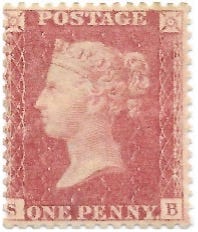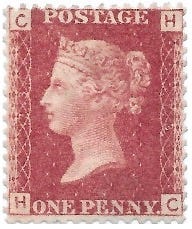We asked a leading exhibitor to provide a few highlights of his award-winning exhibit. Our friend, Juan Farah, recently won the Grand at the WSP show in Atlanta (otherwise known as the Southeastern Stamp Expo). Juan kindly agreed to share some insights.
A Collector's Journey: The Penny Red Stars of Great Britain
The Beginning of a Passion – The Transitional Cover and the Birth of the Penny Red Stars
This article begins my three-part series exploring my favorite pieces from my exhibit, Great Britain—Development and Evolution of the Penny Red Stars. Each article delves into unique philatelic pieces that are not only rare but also personally meaningful. I begin with the origins of my fascination: a modest yet pivotal acquisition that ignited a lifelong journey.
The Penny Red Stars
In February 1841, Great Britain issued the Penny Reds. Like its predecessor, the Penny Black, they were not perforated, just like all stamps in the world at the time. In 1850, perforation trials were conducted with the objective of simplifying the removal of individual stamps and reducing the loss of revenue from stamps damaged during the cutting process. These trials were a success and proved the viability of stamp perforation.
After extensive negotiations with the inventor of the perforation process, the first perforated stamps, the Penny Red Stars, were issued in February 1854. These are the stamps in my exhibit.
The Penny Red Stars were in production for just over ten years. They ended in March 1864 when their replacements, the One Penny Red Plates, were introduced. These are the one penny stamps in red that most collectors recognize and often mistake for the Red Stars. The Penny Red Plates are the stamps with letters in all four corners and plate numbers within the inner curved lines of the side network.
The Three One-Penny Stamps printed in shades of red
Penny Red – February 1841, plate 37
Penny Red Stars – February 1854, plate 55
Penny Red Plates – March 1864, plate 73
I selected four favorite pieces for this series, as shown in the order I acquired them.
The first of these pieces is a transitional cover dated May 6, 1857, sent from Derry to Ballymoney, Ireland. A Derry Irish Spoon cancel ties the pale rose stamp.
I obtained this cover at the 2006 New York World Stamp show. The British dealer described it as a transitional stamp on cover with the proper date of mid-1857. It was not a rare or expensive cover; however, it did spark my interest in the Penny Red Stars.
As I learned why they were called “transitional,” I became more interested in the history of the stamps; how and why they came about, the various color shades, the never-ending plates, re-entries, varieties, and subtle differences that distinguish them. All of this led to what is now a traditional exhibit and collection of the Penny Red Stars. You can say this was the one piece that got me hooked and the subsequent transfer of wealth to holders of Henry Archer’s legacy.
It marks the beginning of a philatelic journey that would grow from a spark of interest into a gold-medal-winning pursuit.
Part II will follow on Thursday.








